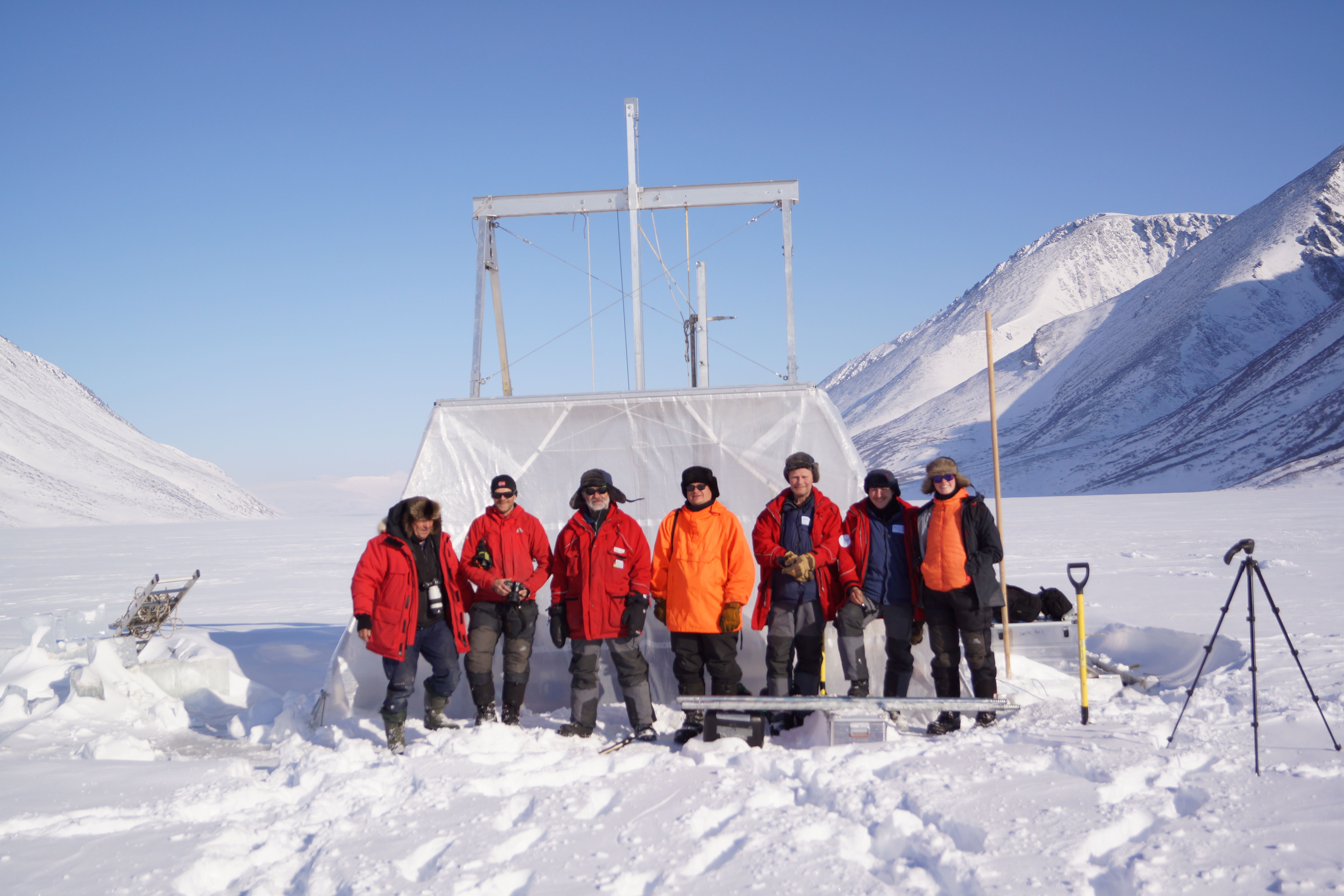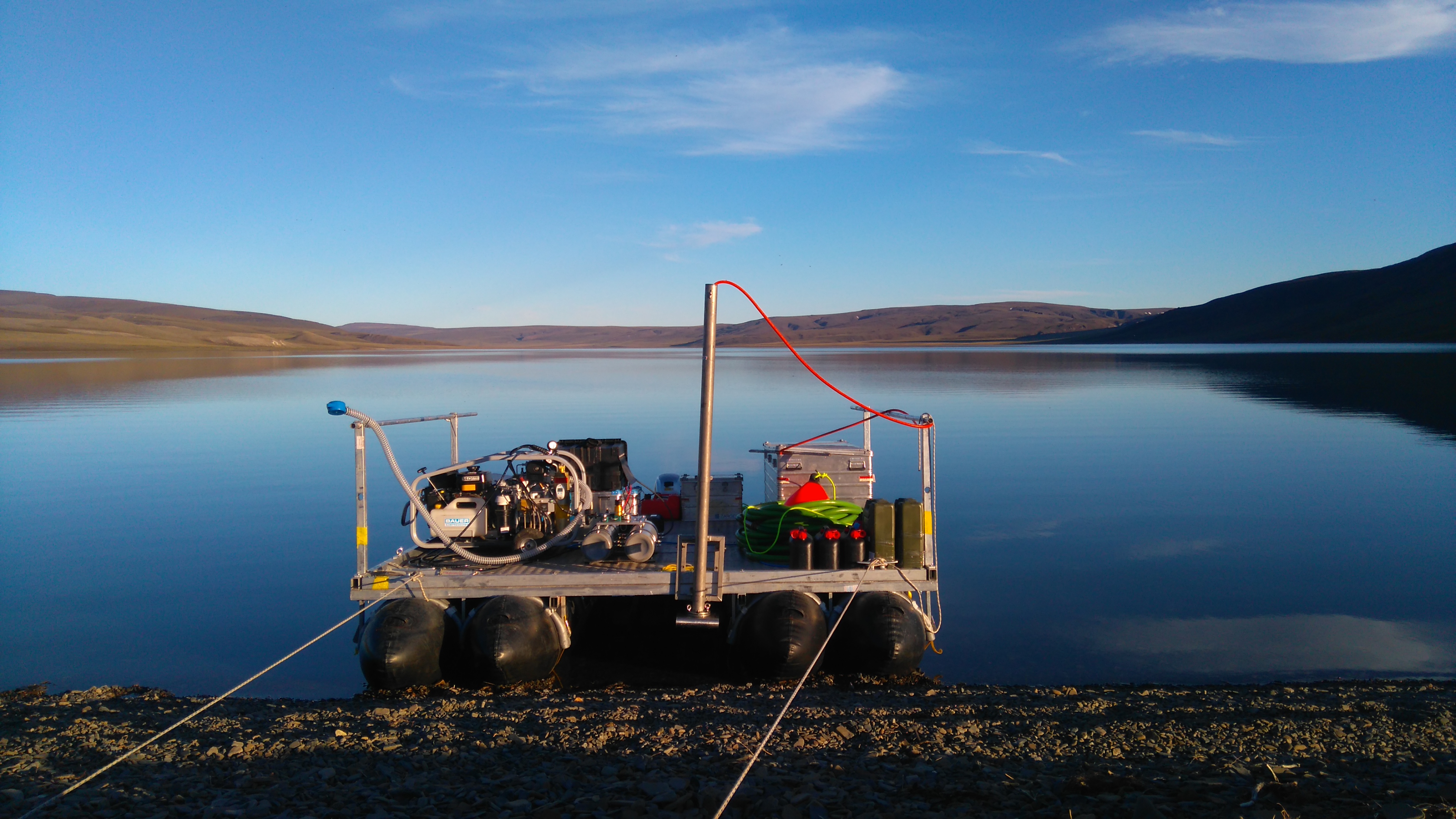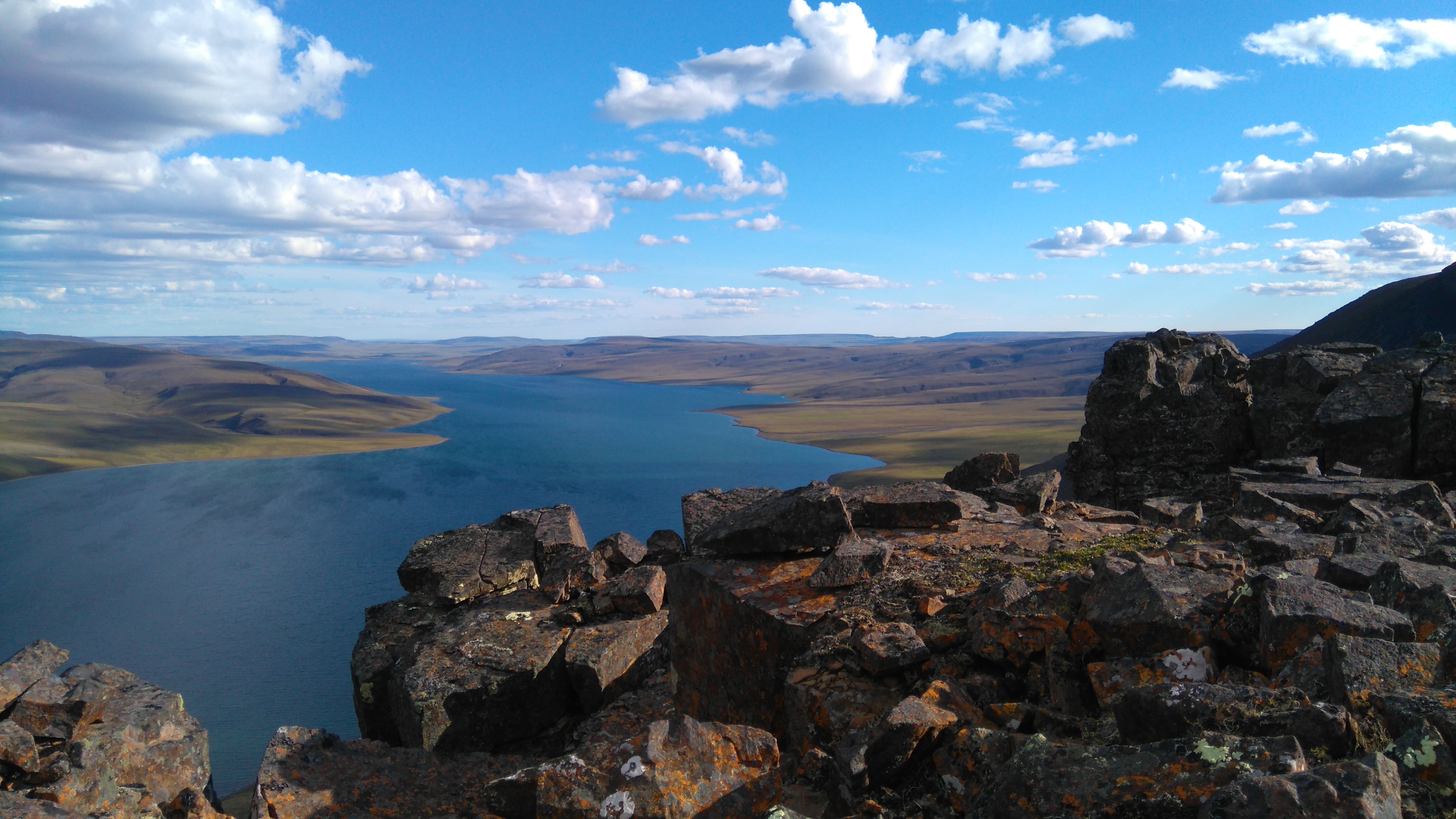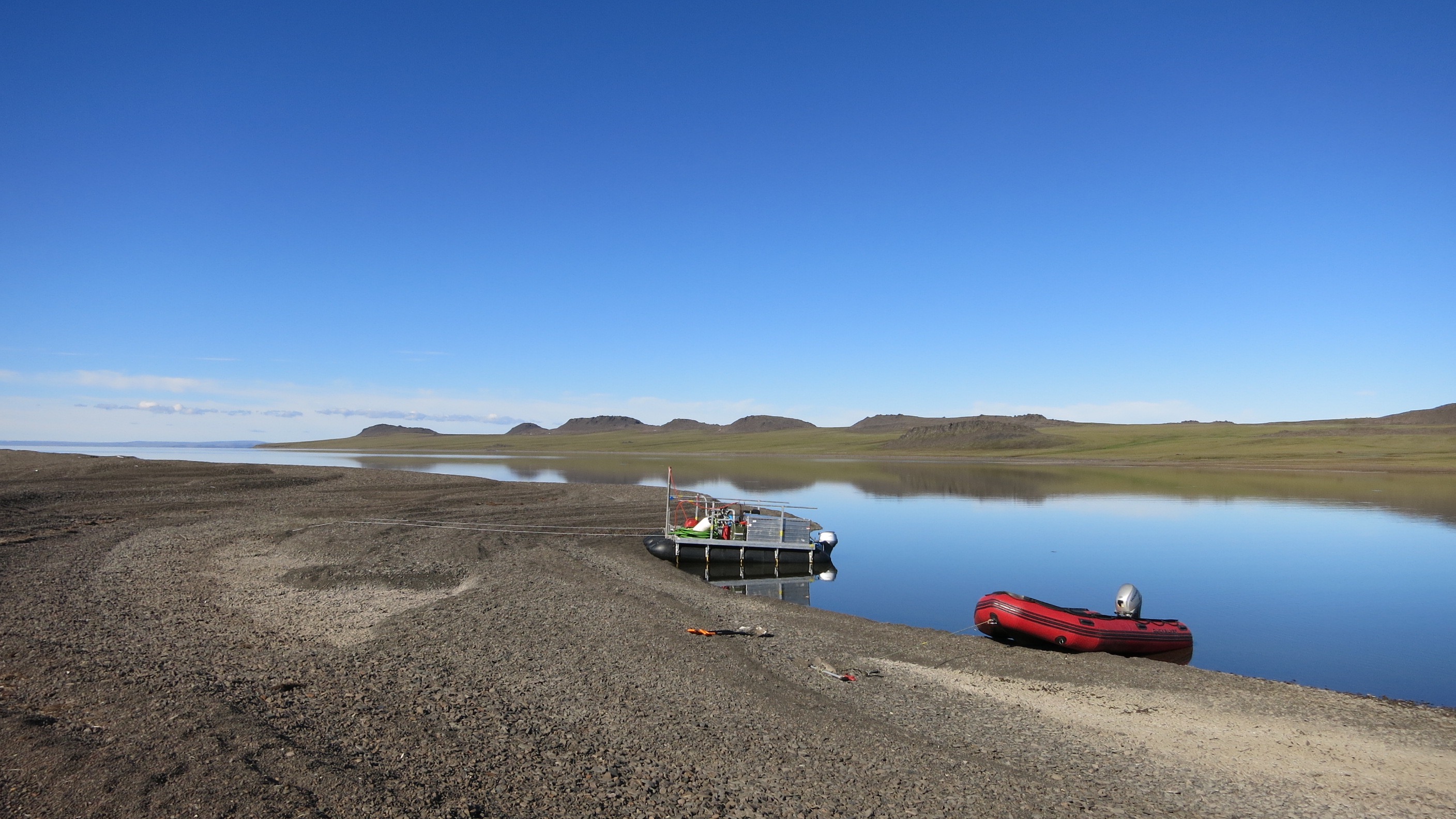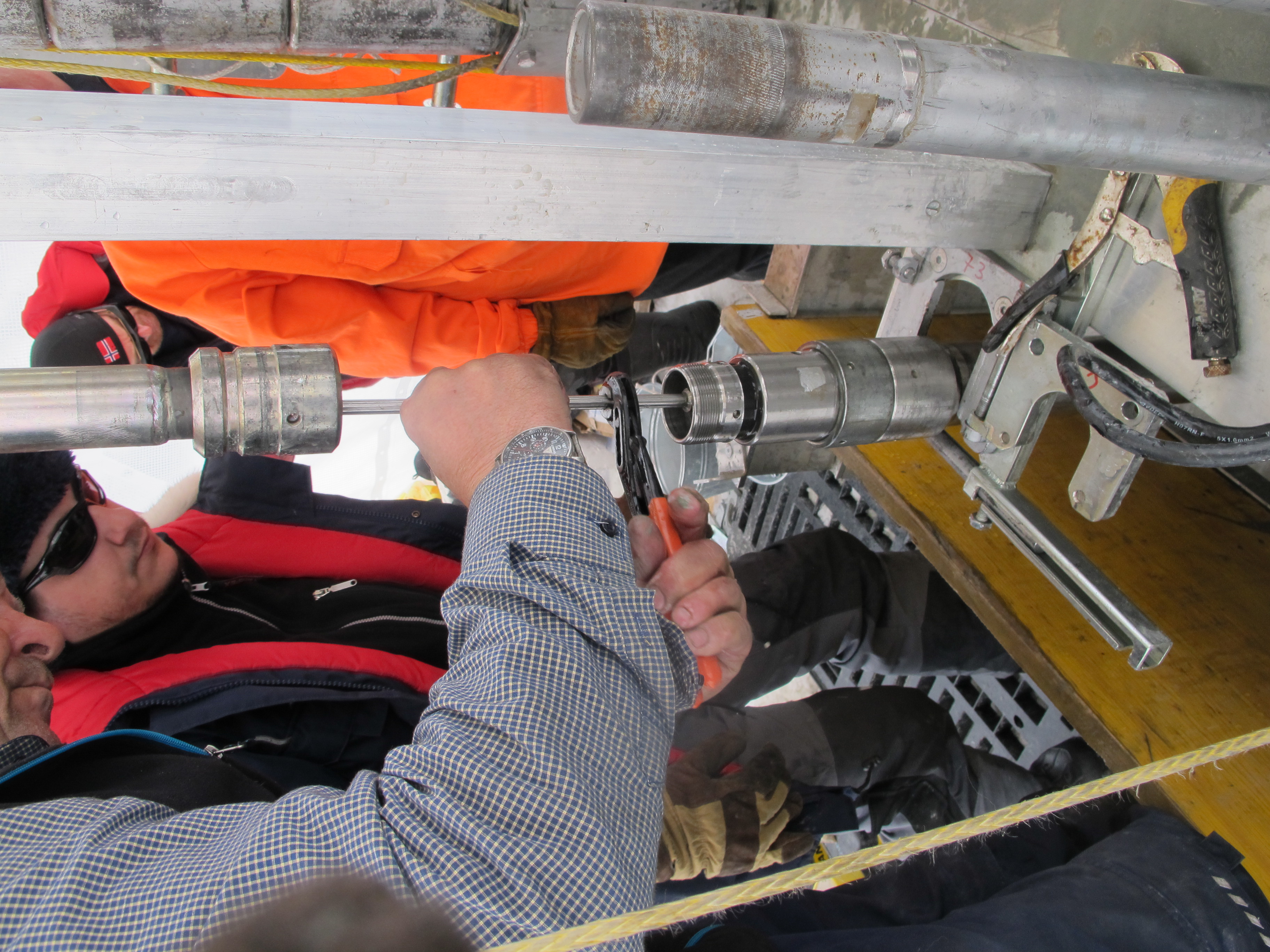PLOT – Paleolimnological Transect: climate and vegetation history from lake sediments
The BMBF project “PLOT - Paleolimnological Transect” focused on the reconstruction of climate and vegetation changes along a 6000 km long latitudinal transect from Lake Ladoga in the west to Lake El´gygytgyn in the East (see map). The reconstruction is based on multi-disciplinary geoscientific analyses of the sedimentary infills of five lakes and comparison of the results with respective data from the master record that was drilled in 2009 within the scope of the El´gygytgyn Drilling Project. The project was coordinated by Martin Melles and Bernd Wagner at the University of Cologne, and was build on scientific contributions by different project partners throughout three project phases.
The project "PLOT" started with the "Pilot Study PLOT", which was funded 04/2013 - 12/2013 (grant no. 03G0839 A, B). Within the scope of this study initial research was carried out on Lake Ladoga, at the western edge of the PLOT transect, including tests of new geophysical and geological field technique, before the equipment is used at the much more remote sites further to the east. The project was carried out by two sub-projects, which complement each other. Subproject 1 at the University of Cologne cored the sedimentary succession at the bottom of Lake Ladoga and conducted initial paleoclimatological investigations on the sediment cores using a multi-disciplinary approach of laboratory analyses. This subproject also provided the coordination of the collaborative project. Within the scope of subproject 2 at the University of Kiel, seismic profiling was planned to be carried out, in order to obtain information on the three-dimensional architecture and genesis of Lake Ladoga´s sedimentary infill prior to the coring. The technique purchased within the scope of the project fully fulfilled the expectations. The seismic data obtained provide a detailed picture of the sediments in Lake Ladoga, which host information concerning climatic fluctuations, mass wasting, and neotectonic events. Of particular importance is the proof of preglacial sediments that have survived the inundation of the Eurasian Ice Sheet during the last glacial in protected sedimentary pockets. Sediment coring at two sites, reaching about 23 m and 18 m, provides access to the entire postglacial history of the lake with unprecedented time resolution, and in one case penetrates deep into the preglacial sediments.
The subsequent BMBF project "PLOT" funded in the period 11/2016 - 10/2018 (grant no. 03G0859 A, B, C) aimed at the first detailed reconstruction of the climatic and environmental history during the Late Quaternary along the entire PLOT transect (see map). The work was separated into three complementary subprojects. Subproject 1 at the University of Cologne recovered up to 54 m long sediment cores from the lakes Bolshoye Shuchye (Polar Urals), Levinson-Lessing, Taymyr (both Taymyr Peninsula) and Emanda (Verchoyansk Mountains). As the cores from Lake Ladoga (close to St. Petersburg), the new cores were investigated by a multi-disciplinary approach, interpreted palaeoclimatologically and compared with data from drill cores retrieved in 2009 from Lake El´gygytgyn (Chukotka). This subproject also provided the coordination of the collaborative project. Within the scope of subproject 2 at the University of Kiel, the three-dimensional architecture of the sedimentary infill in lakes Levinson-Lessing and Taymyr was surveyed by seismic profiling prior to the coring. The data obtained were processed and genetically interpreted together with respective data from the pilot study at Lake Ladoga. Within the scope of subproject 3 at the Alfred Wegener Institute in Potsdam and Bremerhaven, glacial/interglacial variations in the hydrological cycle in the Eurasian Arctic were investigated. This was done by a combined data and model approach, with the reconstruction of the temporal variability based upon isotope ratios in fossil diatoms that were calibrated by modern studies, and comparison with palaeoclimate simulations by means of Earth Sytem and Atmopsphere Models. The results obtained by the PLOT project provide a substantial gain in insights into the climatic and environmental history of northern Eurasia in the course of the last glacial/interglacial cycle. Of particular importance is the information concerning the history prior to the Last Glacial Maximum, which was only fragmentary known before but could be expanded considerably by new data from all lakes investigated.
The PLOT initiative was consummated with the BMBF project "PLOT Synthesis", which was funded in the period 11/2019 - 12/2021 (grant no. 03F0830 A, B, C). This project complemented the analyses and interpretations of the geophysical data and sediment cores from the lakes Ladoga, Bolshoye Shuchye, Levinson-Lessing, Taymyr, Emanda and Elgygytgyn, which had been recovered within the scope of the preceding BMBF projects. The work was again separated into three subprojects, which complemented each other. Subproject 1 at the University of Cologne focused on the multi-disciplinary analyses of the sediment cores, subproject 2 at the University of Kiel on the seismic exploration of the sediment thickness and architecture in the lakes and subproject 3 at the Alfred Wegener Institute in Potsdam and Bremerhaven on isotope-geochemical analyses of selected sediment records as well as paleoclimate simulations by means of Earth System and Atmosphere Models. The project coordination was conducted in the framework of subproject 1. The results obtained about the climatic and environmental histories at the investigated lakes were put into a supra-regional context. They allow to draw conclusions on the regionally different driving forces, from external factors such as insolation changes due to variations of the Earth´s orbit to feedback mechanisms between the regional ice sheets, the adjacent oceans and the vegetation and permafrost distribution on land. The results were made accessible for the science community by numerous qualification theses, conference contributions and publications, and via data archiving in international data bases.

